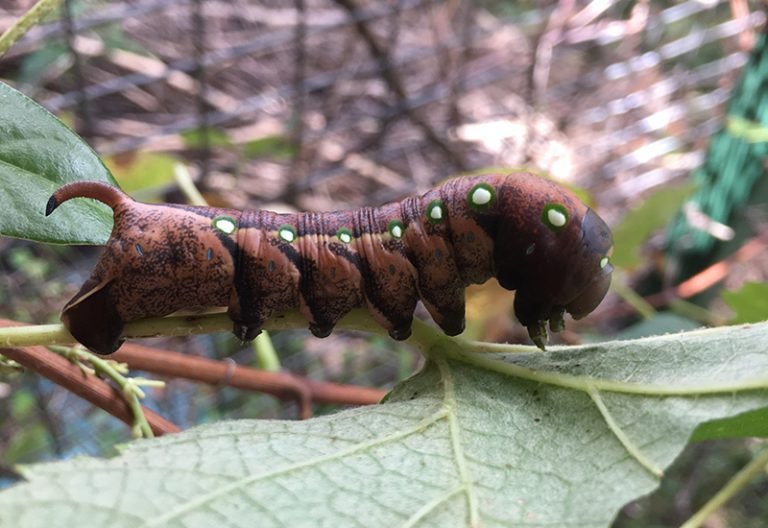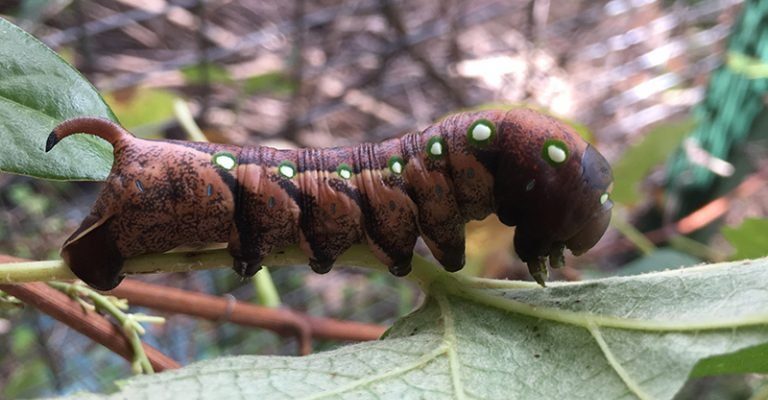
Hornworms, specifically the *Manduca sexta*, are the larvae of the Carolina sphinx moth. They have this impressive ability to devour a whole plant in no time. So when summer rolls around, you might find yourself questioning their annual cycle. Let’s take a closer look at this pesky creature’s life cycle and get a better understanding of whether they are here to stay in your garden.
Understanding the Life Cycle of Hornworms
The hornworm’s life cycle is a fascinating journey that plays out in stages. First, we start with the moth, which lays its eggs on the leaves of plants, particularly tomatoes, peppers, and eggplants. Imagine being a caterpillar—your biggest job is to eat as much as you can to prepare for the next phase of life. Once the eggs hatch, the little larvae will munch their way through your garden. Each hornworm can eat a staggering amount of foliage in just a few days.
After they grow and reach a certain size, which usually takes about 3-4 weeks, these caterpillars will then find a safe spot to dig into the soil. There, they will transform into pupae, which is kind of like a magical sleepover before they emerge as moths. In ideal conditions, this entire cycle can repeat multiple times throughout the growing season, especially in warm regions.
So, as you can see, hornworms don’t just show up out of nowhere. They have a clear life cycle that repeats, but does that mean they come back every year? Let’s explore that.
Do Hornworms Winter Over?
Now, you might be wondering what happens to hornworms when the colder weather hits. The good news is that hornworms can’t survive freezing temperatures. However, they have their own survival strategy. During the cold months, these pests will typically pupate in the ground. This means they stay snug beneath the soil, waiting for warmer days to emerge as adult moths again.
Here’s the thing: if you live in a region with mild winters, it’s possible for hornworms to make an annual comeback due to favorable conditions. The magic happens when those pupae transform back into moths as soon as the temperature rises. They’ll lay eggs, and well, you can guess what happens next. If you’re not careful, you may find yourself with a crowded crop of hornworms again come summer.
Factors Affecting Hornworm Populations
There are several factors that influence whether hornworms will be back year after year. Some of these include:
- Climate: As mentioned earlier, hornworms thrive in warm climates. If you live in a place where winters are harsh, you’re less likely to see them return.
- Plant Availability: Hornworms are drawn to specific plants. If you remove their favorite plants from your garden, they might find it harder to thrive.
- Natural Predators: Birds, wasps, and even parasites play a critical role in keeping hornworm populations in check.
- Pest Management: Using organic pesticides or introducing beneficial insects can significantly reduce the hornworm population.
Each of these aspects contributes to whether you’ll see hornworms again, so it’s essential to be proactive in managing your garden environment.
How to Manage Hornworms
If you’ve decided you don’t want these caterpillars crashing your garden party year after year, there are steps you can take to manage them effectively. Wouldn’t it be nice to keep your garden as hornworm-free as possible? Here are some handy tips:
1. **Regular Inspection:** Take time to inspect your plants regularly. Look for any signs of hornworm activity, including droppings or chewed leaves. If you find them early, you can manually remove and dispose of them.
2. **Encourage Beneficial Insects:** Familiarize yourself with insects that prey on hornworms, like ladybugs or lacewings. Planting flowers that attract these beneficial bugs can help keep the hornworm population down.
3. **Use Organic Pesticides:** If the infestation gets out of hand, you could try organic options like neem oil. It’s a gentler way to keep pests at bay without harming the environment.
4. **Crop Rotation:** Changing where you plant your crops each year can confuse hornworms and keep them from returning to their favorite munching spots.
By incorporating these strategies, you can significantly reduce your chances of facing a hornworm invasion year after year.
What Happens If You Ignore Hornworms?
If you decide to ignore these pesky caterpillars, you might find that they multiply quickly. A single hornworm can consume a large portion of a plant in just a few days. This means that if you don’t pay attention to them, your plants could be decimated before you even realize it.
Additionally, hornworms can attract other pests or diseases that damage your garden. It’s like leaving the door open for more uninvited guests who’ll only make things worse. So, while it might be tempting to let nature take its course, proactive pest management will serve you well.
So, do hornworms come back year after year? It really depends on several factors, including climate, pest management, and plant availability. These little green munchers have a life cycle that allows them to thrive in the right conditions, but with the proper precautions, you can minimize their impact on your garden.
Remember, if you keep an eye out, encourage beneficial insects, and manage your plants wisely, you’ll have a much better chance of enjoying a hornworm-free garden in the years to come. As with many gardening challenges, a little bit of knowledge and effort can go a long way. Happy gardening!

